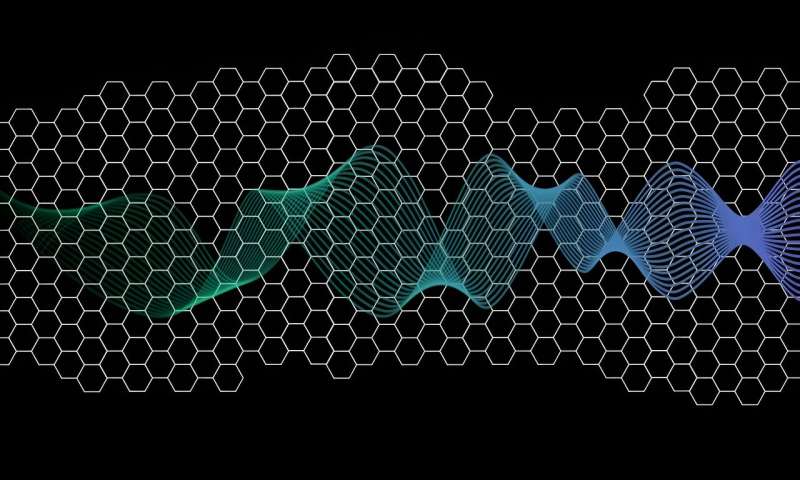Nothing in the world is perfect. This is also true in materials research. In computer simulations, one often represents a system in a highly idealized way; for example, one calculates the properties that an absolutely perfect crystal would have. In practice, however, we always have to deal with additional effects—with defects in the crystal lattice, with additional particles that attach to the material, with complicated interactions between the particles. The crucial question is therefore: Do these unavoidable additional effects change the material properties or not?
This is particularly interesting in the case of the two-dimensional material graphene, which consists of only a single layer of carbon atoms. It has long been known that graphene has excellent electronic properties. However, it was unclear until now how stable these properties are. Are they destroyed by disturbances and additional effects, which are unavoidable in practice, or do they remain intact?
Researchers at TU Wien (Vienna) have now succeeded in developing a comprehensive computer model of realistic graphene structures. It turned out that the desired effects are very stable. Even graphene pieces that are not quite perfect can be used well for technological applications. This is good news for the global graphene community. The research is published in the journal Carbon.
Many paths lead through graphene
“We calculate on an atomic scale how electric current propagates in a tiny piece of graphene,” says Prof. Florian Libisch from the Institute of Theoretical Physics at TU Wien. “There are different ways an electron can move through the material. According to the rules of quantum physics, it doesn’t have to choose one of these paths; the electron can take several paths at the same time.”
These different paths can then overlap in different ways. At very specific energy values, the paths cancel each other out; at this energy, the probability of electrons passing through the graphene piece is very low, and the electric current is minimal. This is called “destructive interference.”
“The fact that the current flow decreases dramatically at very specific energy values for quantum physical reasons is a highly desirable effect technologically,” explains Libisch. “This can be used, for example, to process information on a tiny size scale, similar to what electronic components do in computer chips.”
One can also use it to develop novel quantum sensors. Suppose a graphene piece conducts virtually no current at all. Then, suddenly, a molecule from the outside attaches to the graphene surface. “This one molecule changes the electronic properties of the graphene piece a tiny bit, and that can already be enough to suddenly increase the current flow quite drastically,” says Dr. Robert Stadler. “This could be used to make extremely sensitive sensors.”
Numerous possible interferences
But the physical effects that play a role in the details are very complicated. “The size and shape of the graphene piece is not always the same, and there are many-body interactions between several electrons that are very difficult to calculate mathematically. There may be unwanted extra atoms in some places, and the atoms always wobble a bit—all of this has to be taken into account in order to be able to describe the material graphene in a truly realistic way,” says Dr. Angelo Valli.
This is exactly what has now been achieved at TU Wien: Angelo Valli, Robert Stadler, Thomas Fabian and Florian Libisch have years of experience in correctly describing different effects in materials in computer models. By combining their expertise, they have now succeeded in developing a comprehensive computer model that includes all relevant error sources and perturbation effects that exist in graphs.
And by doing so, they were able to show that even in the presence of these error sources, the desired effects are still visible. It is still possible to find a certain energy at which current flows only to a very small extent due to quantum effects. Experiments had already shown that this is plausible, but a systematic theoretical investigation was missing until now.
This proves that graphene does not have to be perfect to be used for quantum information technology or quantum sensing. For applied research in this field, this is an important message: The worldwide efforts to use the quantum effects in graphene in a controlled way are indeed promising.


